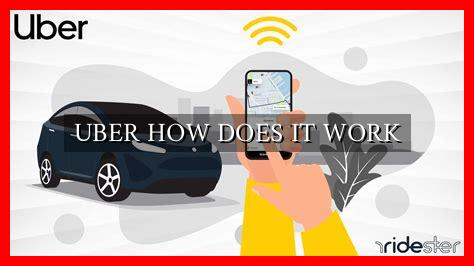-
Table of Contents
UBER: HOW DOES IT WORK
Uber, the popular ride-sharing service, has revolutionized the way people commute in cities around the world. With just a few taps on a smartphone, users can request a ride and be picked up by a nearby driver within minutes. But have you ever wondered how Uber actually works behind the scenes? In this article, we will delve into the intricacies of Uber’s operations and explore the technology and logistics that power this innovative platform.
Matching Riders with Drivers
One of the key features of Uber is its sophisticated algorithm that matches riders with drivers in real-time. When a user requests a ride through the Uber app, the system identifies the nearest available driver based on their location and availability. This process is enabled by GPS technology, which allows Uber to track the location of both riders and drivers with precision.
- GPS technology plays a crucial role in Uber’s operations, ensuring efficient matching of riders with drivers.
- The algorithm takes into account factors such as traffic conditions, driver ratings, and estimated time of arrival to provide users with the best possible experience.
Dynamic Pricing
Uber employs a dynamic pricing model known as surge pricing, which adjusts fares based on supply and demand.
. During peak hours or in high-demand areas, prices may increase to incentivize more drivers to get on the road. This system helps to balance the supply of drivers with the demand for rides, ensuring that users can always find a ride when they need one.
- Surge pricing is a controversial feature of Uber, with some critics arguing that it can lead to exorbitant fares during busy times.
- However, Uber defends surge pricing as a necessary mechanism to ensure that drivers are adequately compensated for their time and effort.
Driver Onboarding and Safety
Before drivers can start picking up passengers through the Uber platform, they must undergo a thorough screening process that includes background checks, vehicle inspections, and driver training. This vetting process is designed to ensure the safety and security of both riders and drivers.
- Uber has faced criticism in the past for its screening procedures, with some incidents of driver misconduct raising concerns about passenger safety.
- The company has since implemented stricter background checks and safety measures to address these issues and improve trust in the platform.
Conclusion
In conclusion, Uber’s success can be attributed to its innovative technology, efficient logistics, and focus on customer experience. By leveraging GPS technology, dynamic pricing, and rigorous safety protocols, Uber has transformed the way people travel in urban areas. While the company has faced challenges and controversies along the way, it continues to evolve and adapt to meet the needs of its users.
For more information on how Uber works, you can visit their official website here.





